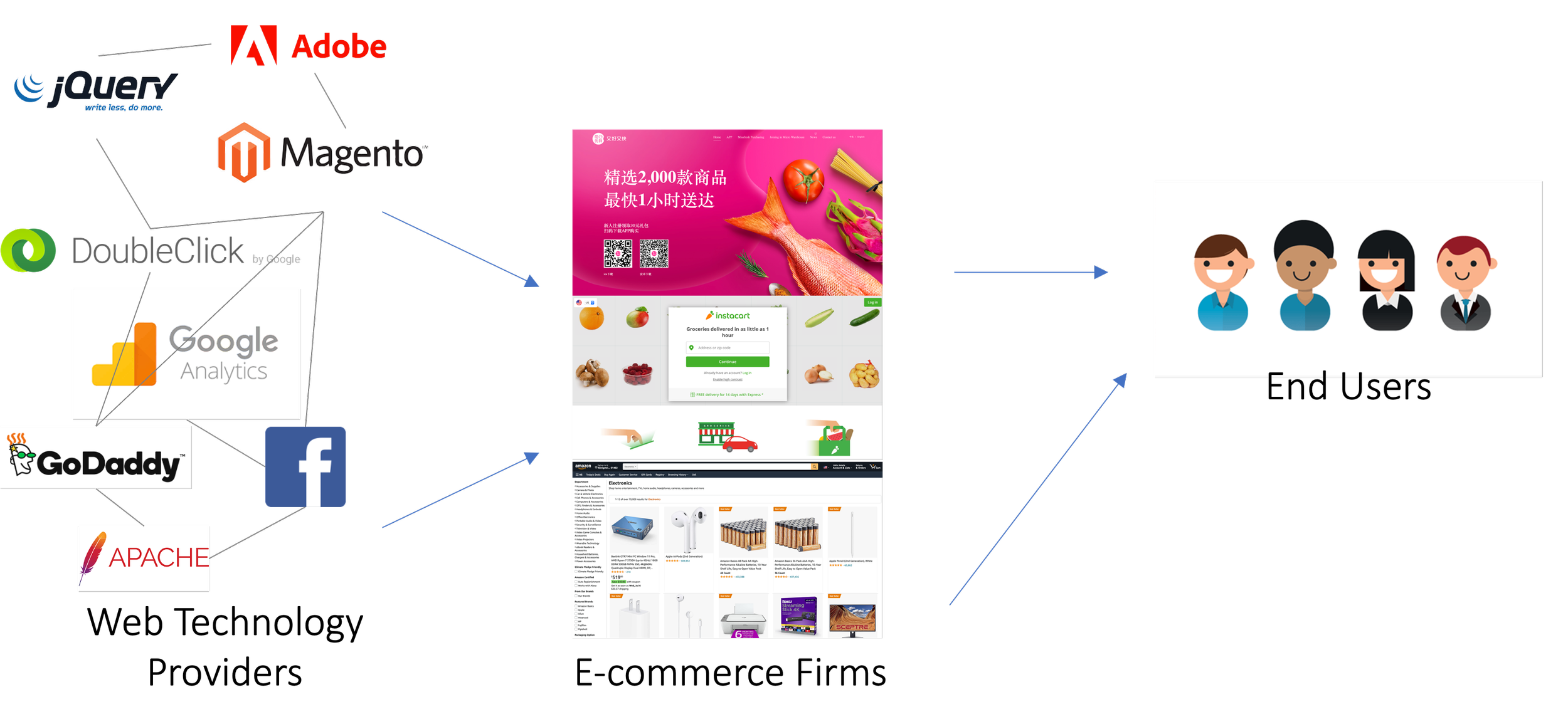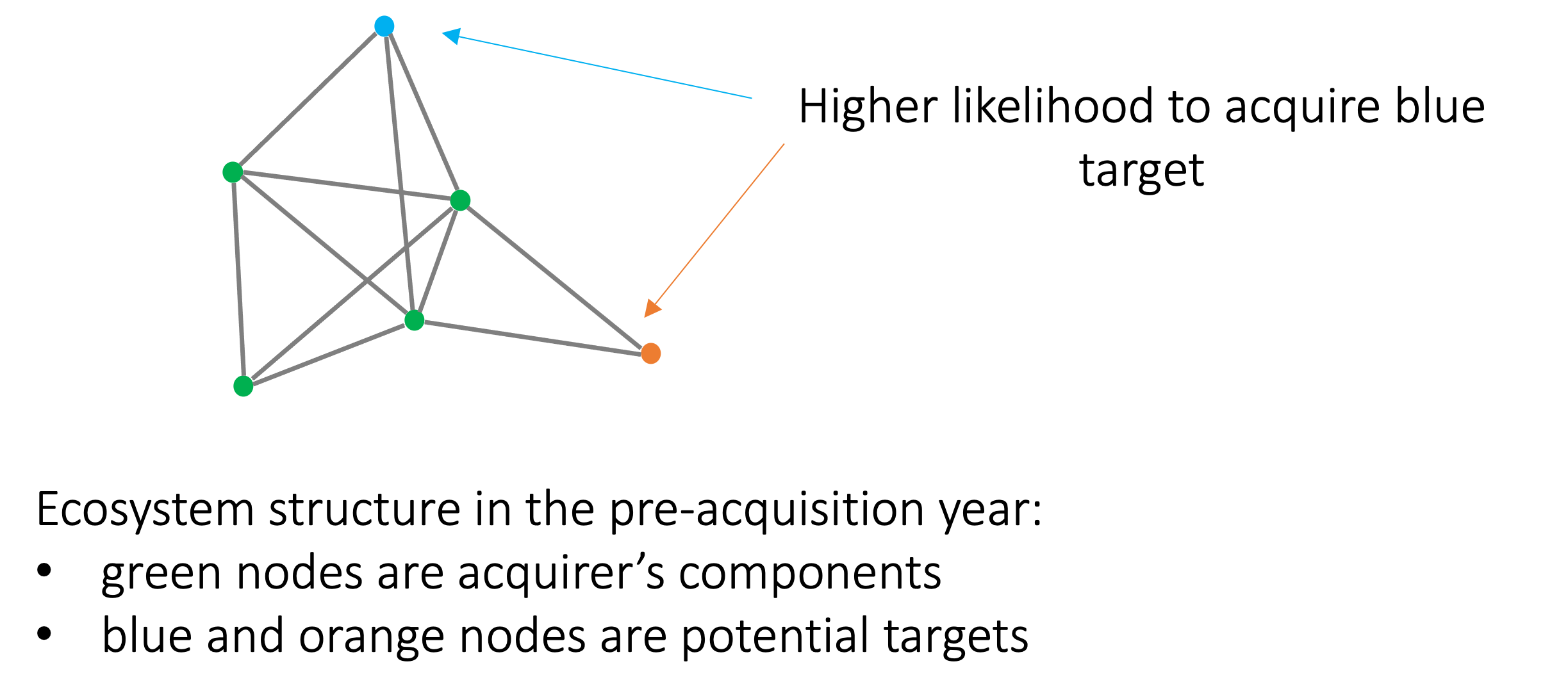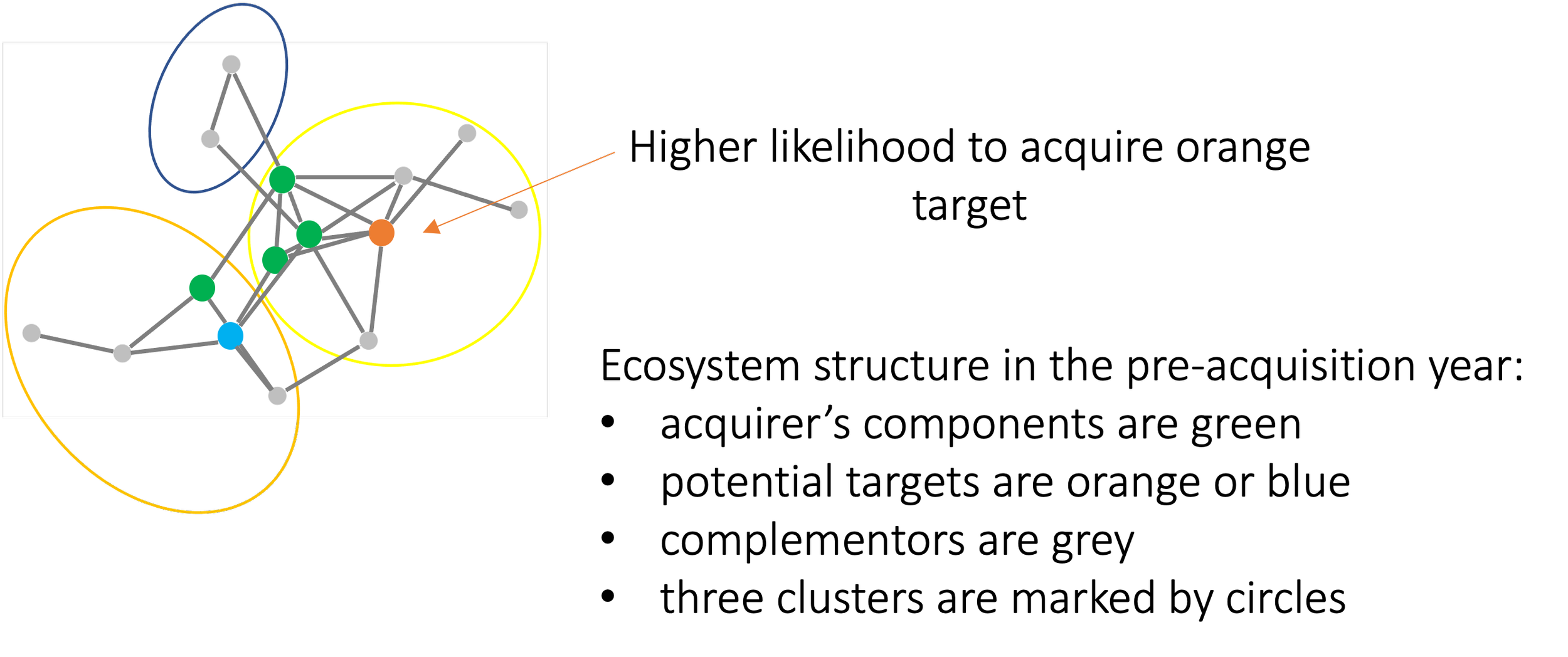Overview
I am interested in interdependence among technological components that span across organisations. At the heart of ecosystem research is the study of how firms manage interdependencies (Adner & Kapoor, 2010; Jacobides, Cennamo, & Gawer, 2018). Often, ecosystems are mediated by platforms which act as intermediaries that reduce frictions (Gawer, 2009; Kretschmer, Leiponen, Schilling, & Vasudeva, 2022; Parker & Van Alstyne, 2005; Rochet & Tirole, 2003). To establish the distinction between ecosystems and other forms of coordination, prior research has emphasized the independence of firms within ecosystems. However, there is no dichotomous distinction between loose coordination based on complementarities in ecosystems and tight coordination based on fiat in hierarchies. I suggest that there is a continuum from loose to tight integration even within ecosystems. The intensity of integration changes over time and can also lead to changes in firm boundaries. My papers address the need to study heterogeneity of integration mechanisms among organizations in an ecosystem.
PUBLICATIONS AND WORKING PAPERS
how ecosystem structure affects firm performance following a negative shock to interdependencies
Natalie Burford, Andrew Shipilov, Nathan Furr (2022), strategic management journal, 43(1), 30-57.
This paper examines the effects of component choices on firms’ performance following a shock to the ecosystem’s alignment structure. Findings show that a reduction of local component interdependence and an increase in component dispersion across clusters has a positive effect on firm performance following a negative shock to interdependencies. Our prediction that an increased use of central components would have a negative effect was not supported, when controlling for local interdependence. This paper illustrates how graph theory concepts can be used as a tool for studying the patterns of interdependencies among components at the level of an innovation ecosystem (Shipilov & Gawer, 2020). There are multiple levels of component interdependencies in an ecosystem, and users can deploy combinations of strategies at different levels to adapt to changing conditions. When comparing the relative importance of different levels of component interdependence for firms’ performance, findings show that the impact diminishes with an increase in distance of interdependencies from the firm. The paper is co-authored with Andrew Shipilov and Nathan Furr and is published at the Strategic Management Journal.
Low Local Interdependence
High Local Interdependence
Finding: Following a negative shock to interdependencies, firms experience a stronger negative relationship between greater local component interdependence and performance, relative to firms which do not experience the shock.
Ecosystem interdependencies as drivers of acquisition choices
Natalie Burford, andrew shipilov, Nathan Furr, R&R at strategic management journal
In this paper, we develop the construct of “ecosystem synergies”. When firms make acquisitions, their target selection depends on the ecosystem structure surrounding the target and the acquirer. In addition to known synergies originating from internal efficiencies and those stemming from increased market power, acquisitions can also enhance the value of the firm’s position in the broader ecosystem. Ecosystem synergies arise from the ability of the firm to align and enhance their non-generic complementarities with those of the third-party complementors, and from their ability to attract additional complementors. Empirically, this study focusses on acquisitions involving e-commerce web technology providers, such as Alphabet, Facebook, Microsoft, IBM and Yahoo. Results show that firms conduct acquisitions to enhance the integration of their value proposition with that of the target firm, and also to align more tightly with third complementors. Only large firms seem to acquire in order to enhance their components’ centrality within the ecosystem. The paper is co-authored with Andrew Shipilov and Nathan Furr and received a Revise and Resubmit decision at the Strategic Management Journal.
platform expansion into customer-facing activities
Solo-authored job market paper
In this project, I examine the impact of platform expansion on the user engagement of unique platform participants relative to typical participants. Prior research suggests that platforms offer services and product features in order to attract new platform participants, which in turn attract more end users (Cusumano & Gawer, 2002; Parker & Van Alstyne, 2005). However, research has largely overlooked the impact of such offerings on existing platform participants. I suggest that platform owners compete with platform participants by taking over parts of their value proposition. I distinguish between platform- owner entry (Zhu, 2018; Zhu & Liu, 2018) and platform expansion into customer-facing activities. During my collaboration with a price comparison platform, I learned that the platform’s key strategic imperative is the promotion of a direct checkout feature which allows end user to pay and checkout directly on the platform instead of being redirected to the e-commerce shops that populate this platform. These shops include major e-commerce players such as Amazon and eBay. My findings suggest that the user engagement of platform participants with specialized resources and distinct ecosystem positions decreases relative to that of generalists and firms with more typical ecosystem positions, following the introduction of the direct checkout option. These results indicate that platforms’ offerings do not benefit all participants equally, and that users might engage with a more homogenous set of participants as a result of such offerings. This paper was my solo-authored job market paper and I am working on getting it ready for journal submission.







